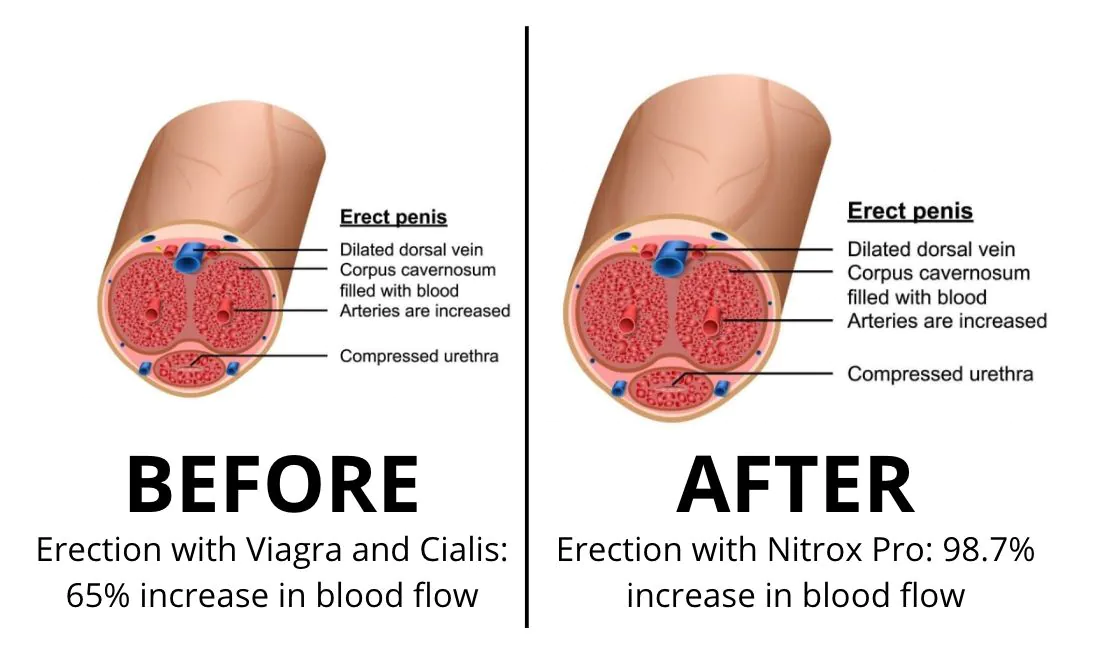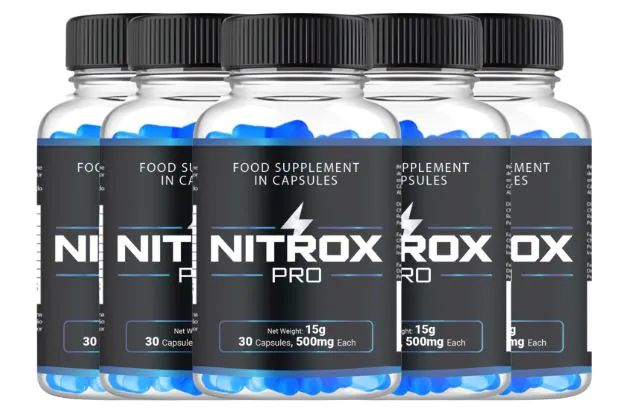The salt water flush for weight loss is a detox method that involves drinking a mixture of salt and warm water to cleanse the digestive system, promoting bowel movements and potentially aiding in weight loss. While it has benefits like improved digestion and toxin elimination, it also carries risks such as dehydration and electrolyte imbalance, so it should be done safely and with caution, ideally after consulting a healthcare provider.
The salt water flush for weight loss is gaining attention as a natural detox method. This approach not only helps in cleansing the digestive system but can also assist in shedding unwanted pounds. In this post, we will discuss what a salt water flush is, how it works, its benefits, and necessary precautions to consider. If you’re looking for a natural way to boost your health and manage your weight, keep reading!
What is a Salt Water Flush?
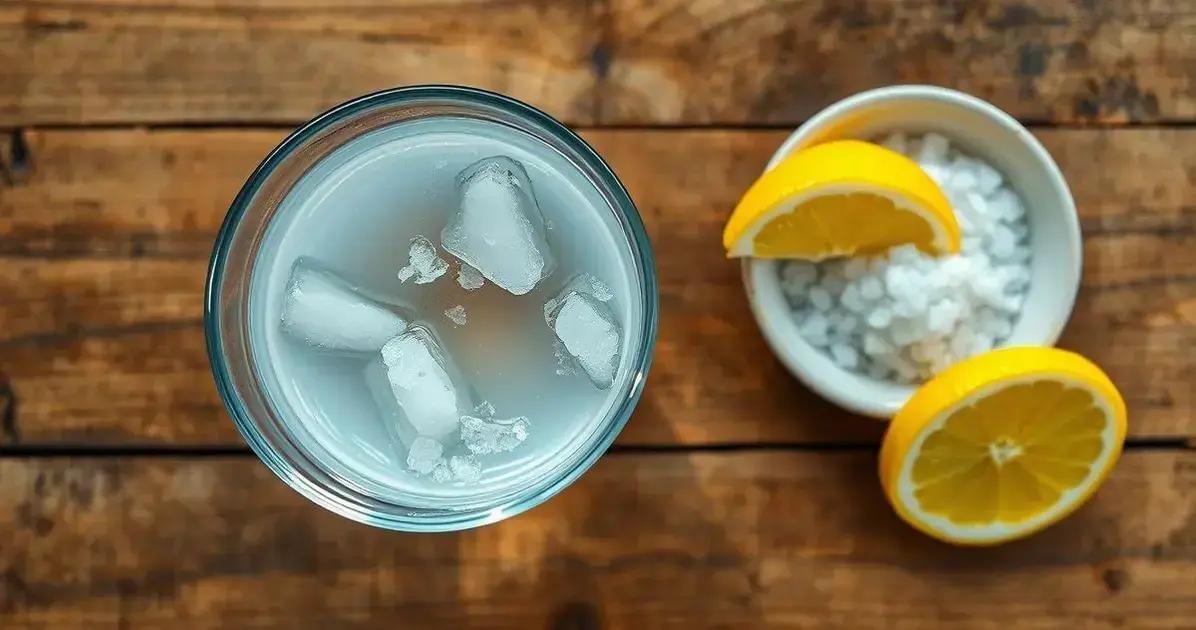
A salt water flush is a natural method designed to cleanse the digestive system. This process involves drinking a mixture of warm water and salt, typically sea salt or Himalayan salt. The primary aim is to produce a bowel movement and clear out toxins from the body.
How It Works
When the salt water is consumed, it travels through the gastrointestinal tract. The high salt content prompts the intestines to absorb more water, leading to increased fluid in the bowels. This flood of liquid stimulates contractions in the intestines, promoting faster evacuation and cleansing of waste.
Usage in Detoxification
The flush is often used as part of detox plans to help individuals reset their digestive health. Many people find that it helps to relieve bloating and discomfort caused by constipation, making it a popular choice for those looking to jumpstart their weight loss journey.
Variations of the Flush
While the basic method involves just salt and water, some versions include additional ingredients such as lemon juice or herbal tea. These additions can enhance the flavor and may provide extra benefits, making the experience more pleasant for some users.
Importance of Staying Hydrated
Following a salt water flush, it’s crucial to replenish lost fluids. Staying hydrated helps maintain overall health and assists in flushing out remaining toxins. Drinking plenty of water after the flush is essential for recovery.
Incorporating a salt water flush into a weight loss regimen can be an intriguing way to explore natural detox methods. However, it is important to approach this practice with care and awareness of its effects on your body.
How Does It Work for Weight Loss?
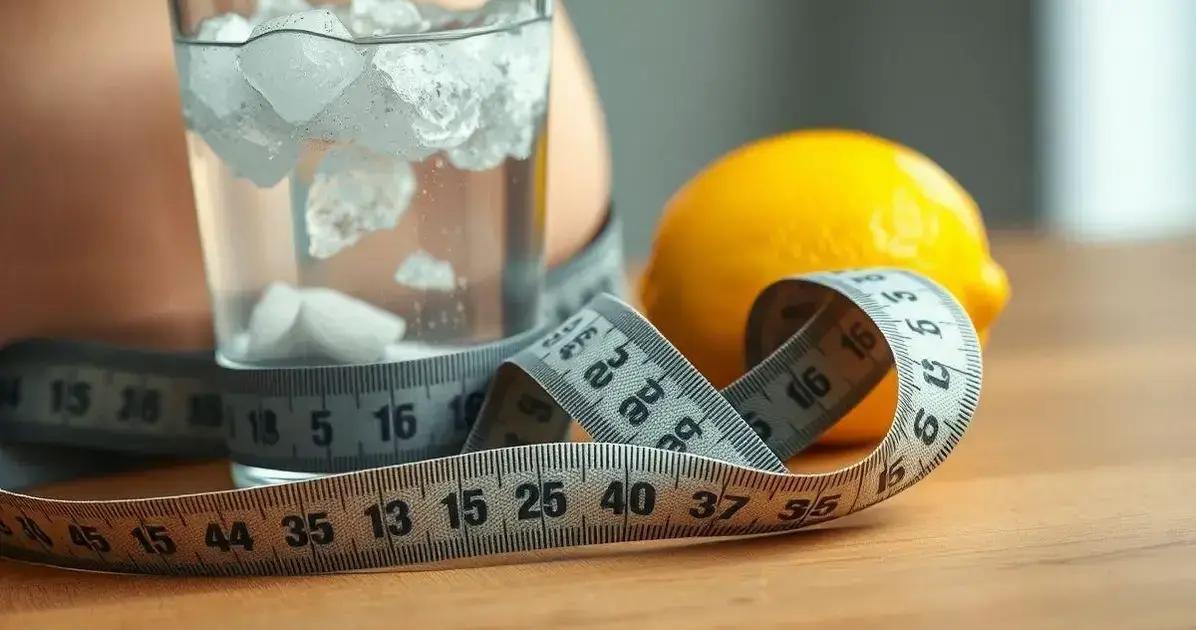
The salt water flush can aid in weight loss primarily by cleansing the digestive tract. When you consume the salt water mixture, it induces a strong bowel movement. This process clears out waste and may help reduce bloating.
Increased Metabolism
While the flush itself does not directly burn fat, the removal of waste can make your body feel lighter and may lead to better nutrient absorption. Improved digestion can potentially enhance metabolic rates, which is helpful for weight loss.
Appetite Control
Simplifying digestion can also impact hunger signals. By detoxifying the body, some users report a reduction in cravings. This can make it easier to maintain a healthy diet and resist unhealthy snacks.
Fluid Retention
The high salt content helps draw water into the intestines, which may lead to temporary weight loss due to fluid expulsion. However, this weight loss is often temporary and should not be confused with fat loss.
Complementing a Healthy Lifestyle
Using a salt water flush should not replace regular exercise or a balanced diet. Instead, it can be an occasional supplement to a healthy weight loss strategy. Combined with proper nutrition and physical activity, it may enhance your efforts.
Before trying a salt water flush, understanding how it works for weight loss is crucial. Maintain realistic expectations and remember it’s just one tool among many for achieving your weight loss goals.
Benefits of Salt Water Flush for Detoxification

The salt water flush offers several benefits for detoxification. This method is a natural way to cleanse the body and promote healthy digestion. Here are some key benefits:
1. Elimination of Toxins
By inducing a bowel movement, the flush helps remove harmful substances that may have built up in your intestines. This process can lead to a cleaner gut and improved overall health.
2. Improved Digestive Health
Regularly performing a salt water flush may help restore balance in the digestive system. This can be especially beneficial for those experiencing constipation or irregularity.
3. Enhanced Nutrient Absorption
Cleansing the digestive tract may allow for better absorption of vital nutrients from the foods you consume. This can support overall wellness and energy levels.
4. Better Skin Health
Detoxification can also have positive effects on your skin. By removing toxins from the body, some individuals notice an improvement in skin clarity and a reduction in breakouts.
5. Boost in Energy Levels
After completing a salt water flush, many people report feeling lighter and more energized. This increase in vitality can motivate individuals to engage more actively in their daily activities.
Incorporating a salt water flush into a detox routine can provide numerous health benefits. However, it’s essential to approach this and any detox method thoughtfully and with proper guidance.
Potential Risks and Side Effects
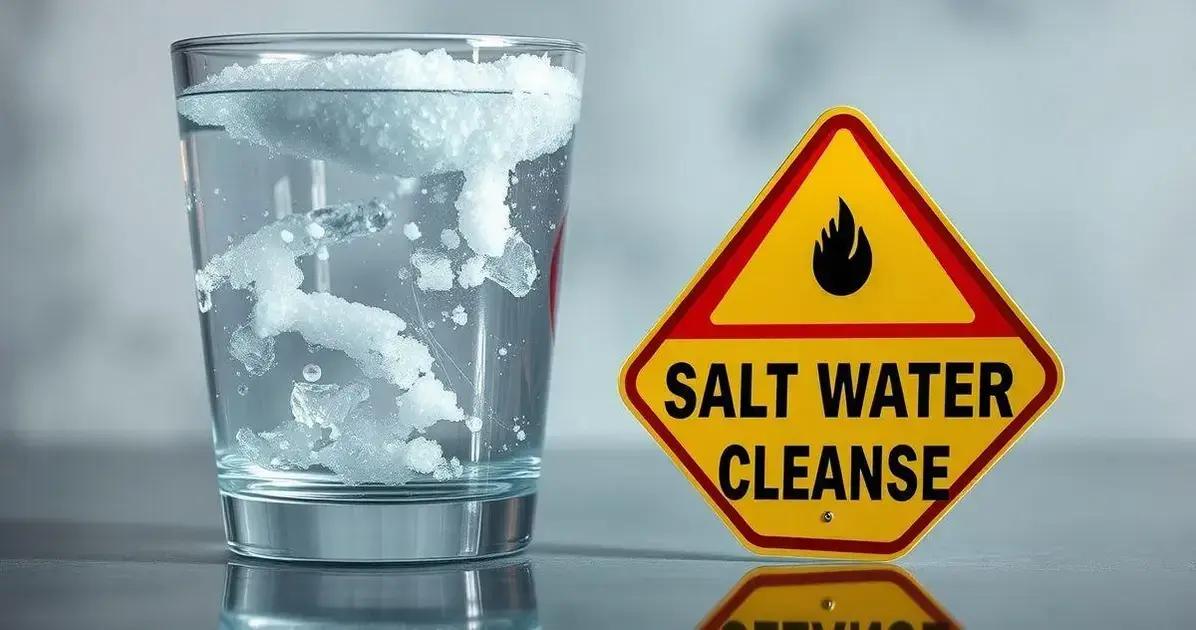
While a salt water flush can offer benefits, there are potential risks and side effects to consider. Not everyone may react positively to this method, and it’s crucial to be aware of these possible issues:
1. Dehydration
One of the main risks is dehydration, as the flush can cause significant fluid loss. It’s essential to rehydrate properly after the procedure to avoid this complication.
2. Electrolyte Imbalance
Consuming a large amount of salt can lead to an imbalance of electrolytes in the body. Symptoms may include headache, dizziness, and even nausea, which can be serious if not addressed.
3. Digestive Disturbances
Some individuals may experience cramping, diarrhea, or stomach discomfort after the flush. These symptoms can be uncomfortable and vary based on individual tolerance to the salt water solution.
4. Not Suitable for Everyone
People with specific health conditions, such as kidney disease, high blood pressure, or heart problems, should avoid salt water flushes. Consulting a healthcare provider is advisable before trying this method.
5. Temporary Weight Loss
While some may experience weight loss, it is often just water weight rather than actual fat loss. Users should manage expectations to avoid disappointment.
Being informed about the potential risks and side effects can help individuals decide if a salt water flush is a suitable option for their wellness journey. Always prioritize safety and consult with a medical professional if needed.
How to Safely Perform a Salt Water Flush
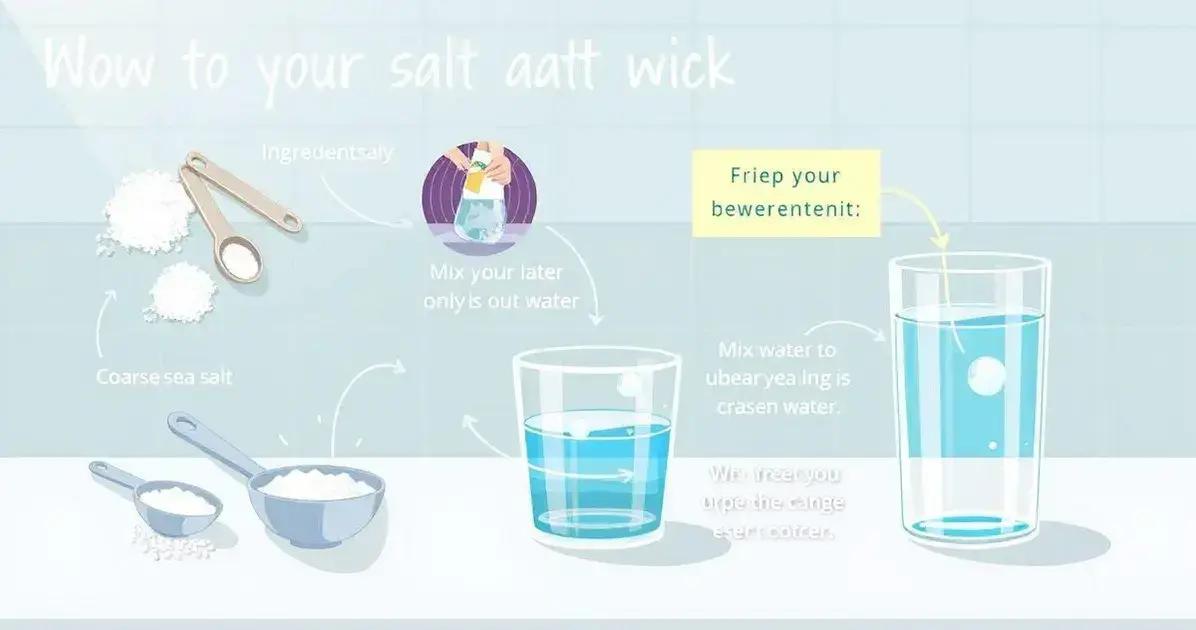
Performing a salt water flush safely involves following specific steps to minimize risks and maximize benefits. Here’s how to do it in a clear and effective way:
1. Choose the Right Ingredients
Use high-quality sea salt or Himalayan salt, as these contain essential minerals. Avoid table salt, which may contain additives. Mix about 2 teaspoons of salt with 1 quart (4 cups) of warm, filtered water.
2. Time It Right
It’s best to perform the flush in the morning on an empty stomach. This ensures that your stomach is clear, leading to better results.
3. Drink Quickly
Once the mixture is ready, drink it quickly within 10-15 minutes. This helps the salt water travel through your system effectively.
4. Stay Near a Bathroom
Be prepared to stay close to a bathroom after consuming the flush. The effect can start within 30 minutes, and you may need to visit the restroom multiple times.
5. Follow Up with Hydration
After completing the flush, drink plenty of water to rehydrate your body. This helps alleviate any potential dehydration from the flush.
6. Frequency of Use
Limit the flush to once a week or as recommended by a healthcare provider. Overdoing it can lead to dehydration and electrolyte imbalances.
7. Listen to Your Body
If you experience any discomfort, cramps, or adverse effects, stop the flush immediately. Consult a healthcare professional for guidance.
Following these steps can help you perform a salt water flush safely while maximizing its potential benefits for your health and wellness journey.
Wrapping Up Your Journey with the Salt Water Flush
The salt water flush can serve as a useful tool in your weight loss and detoxification journey. By understanding how it works, its benefits, and potential risks, you can make an informed decision about incorporating it into your wellness routine.
Performing the flush safely and responsibly is key to maximizing its effects while minimizing any negative side effects. Always listen to your body and consult with a healthcare professional if you’re unsure about its suitability for you.
Incorporating healthy eating habits and regular physical activity alongside the flush can lead to even better results. Gain the most from your health journey by combining methods and lifestyle choices that promote overall well-being.
Embrace your path to a healthier you while considering all aspects of your health and wellness.
FAQ – Frequently Asked Questions about Salt Water Flush for Weight Loss
What is a salt water flush?
A salt water flush is a natural detox method that involves drinking a mixture of warm water and salt to cleanse the digestive system.
How does a salt water flush work for weight loss?
It promotes bowel movements, helps eliminate waste, and may lead to temporary weight loss by reducing water retention and bloating.
What are the benefits of a salt water flush for detoxification?
Benefits include elimination of toxins, improved digestive health, enhanced nutrient absorption, better skin health, and a boost in energy levels.
Are there potential risks and side effects?
Yes, risks may include dehydration, electrolyte imbalance, digestive disturbances, and it may not be suitable for everyone, particularly those with certain health conditions.
How can I safely perform a salt water flush?
To perform it safely, use high-quality salt, drink quickly on an empty stomach, stay hydrated afterward, and limit frequency to once a week.
Who should avoid a salt water flush?
Individuals with kidney disease, high blood pressure, heart problems, or any other serious health conditions should consult a healthcare provider before attempting a salt water flush.




